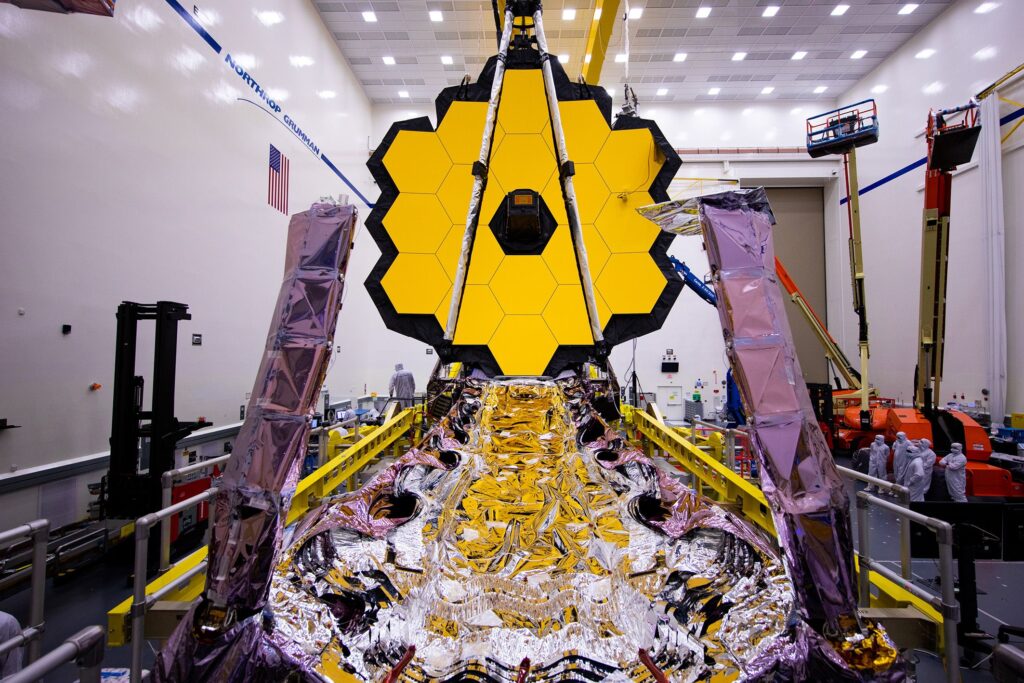One of the most anticipated new pieces of Space hardware has arrived in French Guiana ahead of its scheduled launch on 18th December.
The Webb Space Telescope (WST) is an orbiting infrared telescope that, Jean-Marc Nasr, Head of Airbus Space Systems, “will change the way we see the universe”.
About a month after launch. the Webb Space Telescope will be positioned around 1.5m km behind the Earth (looking from the sun) where it will be able to effectively look back in time and see what the universe looked like around 100-250m years after the big bang. We are currently around 13.7bn years since the big bang.
This is is the time period when the first stars and galaxies were forming helping scientists understand things like how the supermassive black holes at the centre of galaxies came into being and whether they created the galaxies or the galaxies created them.
The Webb Space Telescope will also be able to see inside “dust clouds” where new stars are being formed which is something that can’t be done with existing telescopes.
One of the key instruments onboard the Webb Space Telescope is NIRSpec built by Airbus in Germany. The 200kg spectrograph is capable of simultaneously measuring the near-infrared spectrum of at least 100 objects like stars or galaxies with resolutions down to as low as 0.3 nanometres.
Another key instrument is the Mid-InfraRed Instrument (MIRI) which is designed to penetrate the thick dust clouds to see star births. Airbus in the UK provided management, engineering and quality management for the European consortium that built MIRI.
Jean-Marc Nasr added: “Our contributions to NIRSpec and MIRI instruments are a testament to Airbus’ expertise and the value we can bring to modern astronomy. We are proud to have played a key part in the future discoveries of the Webb mission.”
The Webb Space Telescope is scheduled to launch on 18th December onboard an Ariane 5 launcher.

